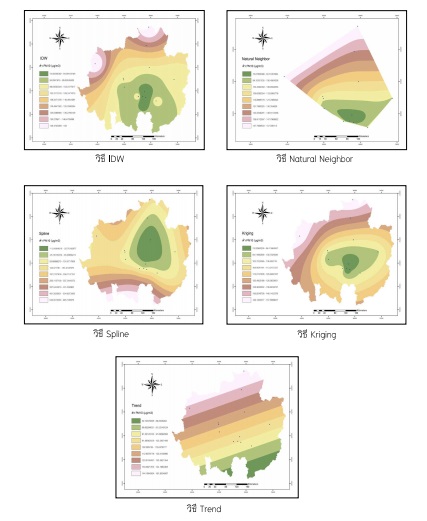Estimating the Particulate Matters (PM10) with Spatial Interpolation Methods in the Northern of Thailand
Keywords:
Particulate Matter less than 10 micrometers (PM10), Spatial InterpolationAbstract
The objectives of this study were: 1) to study the relationship between particulate matter (PM10) in the northern region of Thailand and the physical factors and 2) to estimate the amount of particulate matter (PM10) by using spatial estimation methods (Interpolation) and including studying the suitability of each method. The results showed that the 24-hour average of the particulate matter (PM10) for 5 years between 2011-2015 was the highest in March. The average from all meteorological stations was 107 micrograms per cubic meter. The lowest average was 19 micrograms per cubic meter in August. According to considering the average of each station, the measurement found that Phrae Meteorological Station, Phrae was the highest, Mae Sai District Public Health Office Station, Chiang Rai and Lampang Meteorological Station, Lampang respectively. In terms of physical characteristics with high level of PM10 areas found that the landscape which was a plain basin between the mountains and surrounded by the mountains caused the accumulation of pollutants. In addition, receiving dust from forest fires and open burning that was swept from neighboring countries was one of the most important factor to high level of PM10.
The average amount of particulate matter (PM10) selecting 9 stations out of 13 pollution control department stations in the northern region in order to estimated by spatial interpolation methods: IDW, Natural Neighbor, Spline, Kriging and Trend and data validation from 4 stations, it found that IDW method was the most suitable method for creating a map to estimate the amount of PM10, especially during February to April, which were the highest amount of dust. Since, there were the minimum difference value between the estimated value and the actual measurement value. As for Spline method, it was not appropriate because the difference value between the estimated and the measurement was high level.





